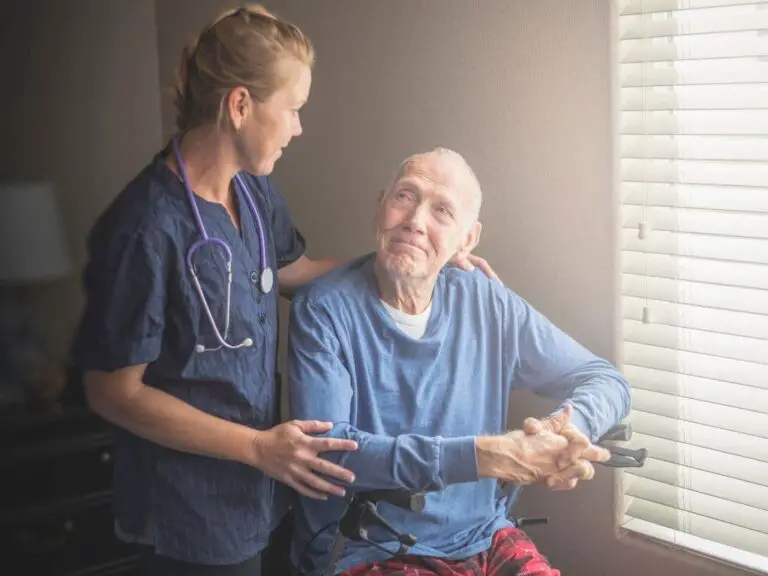California’s Support for Elderly Care: Programs and Financial Assistance
California has one of the largest and fastest growing elderly populations in the United States. As the baby boomer generation ages, the need for quality elderly care continues to increase. California offers several state-funded programs and financial assistance options to support elderly residents and their families. Understanding these resources is crucial as more Californians require long-term care services and support.
Does the state of California pay for elderly care?
Yes, the state of California pays for elderly care through several state-funded programs and financial assistance options. These include In-Home Supportive Services (IHSS), Community-Based Adult Services (CBAS), Program of All-Inclusive Care for the Elderly (PACE), Multipurpose Senior Services Program (MSSP), Medi-Cal, Assisted Living Waiver (ALW), Veterans Aid and Attendance Benefit, Supplemental Security Income (SSI) and State Supplementary Payment (SSP).
Over 6 million Californians are age 65 or older, representing about 14% of the state’s population. By 2030, this number is projected to rise to 8.6 million seniors, or 19% of California residents. The fastest growing segment is seniors age 85 and older. As people live longer and the elderly population swells, demand for care and services tailored to seniors will intensify. Many older adults want to stay in their homes and communities as long as possible. California’s aging demographics underscore the importance of accessible, affordable elderly care options.
High-quality elderly care enables seniors to enjoy health, independence, and quality of life as they age. California prioritizes elderly care through Medi-Cal services, senior nutrition programs, assisted living facilities, and resources for family caregivers. Support ranges from assistance with daily activities to skilled nursing and medical care. Investing in elderly care protects vulnerable seniors, keeps families together, and reduces healthcare costs. It also allows older adults to fully participate in their communities. As demand increases, California continues working to improve elderly care access and innovation.

State-Funded Programs for Elderly Care in California
California has several major state programs that provide elderly care services, including:
In-Home Supportive Services (IHSS)
IHSS is California’s largest program supporting elderly and disabled residents in their own homes. Low-income eligible seniors receive assistance with tasks like bathing, dressing, cleaning, meal preparation, and transportation. Care is provided by independent caregivers and funded through Medi-Cal and state/county resources.
Community-Based Adult Services (CBAS)
CBAS delivers skilled nursing, therapy, social services, personal care, family/caregiver support, meals, and transportation at licensed adult day health centers. It aims to help elderly and disabled Medi-Cal patients avoid nursing home placement.
Program of All-Inclusive Care for the Elderly (PACE)
The PACE program allows seniors with higher care needs to live at home while receiving medical care, therapy, social work, personal care, and other services through a PACE center and specialists.
Multipurpose Senior Services Program (MSSP)
MSSP coordinates social and health care for frail elderly patients through care management and purchasing of services. This prevents premature nursing home placement.
Adult Day Health Care (ADHC)
ADHC provides therapeutic, social, and health activities and services in a community-based setting. Medi-Cal covered ADHC until 2012 when budget cuts ended the optional benefit.
Financial Assistance for Elderly Care in California
Paying for healthcare and daily assistance for seniors can be costly for families. California has several options that help cover elderly care expenses:
Medi-Cal: California’s Medicaid Program
Medi-Cal is California’s Medicaid program providing free or low-cost health coverage. It covers nursing home care, CBAS, MSSP, some IHSS hours, and limited home health benefits for eligible low-income seniors.
Assisted Living Waiver (ALW)
ALW helps pay for room and board at assisted living facilities for low-income Medi-Cal patients as an alternative to nursing homes. Eligible seniors must require help with daily living activities.
Veterans Aid and Attendance Benefit
This VA pension benefit gives cash assistance to low-income war-time veterans (or their surviving spouses) who require help with activities of daily living.
Supplemental Security Income (SSI) and State Supplementary Payment (SSP)
SSI provides cash assistance to aged, blind and disabled people with limited income/assets. SSP offers an additional state payment to SSI recipients to help pay for housing, food and other expenses.
Long-Term Care Insurance
Private long-term care insurance can cover a range of services including nursing home care, assisted living, home health aides, respite care, and other elderly care expenses. Policies vary widely in cost and coverage.
How to Apply for Financial Assistance for Elderly Care in California
Navigating the options for elderly care funding can be complex for families. Following these steps can help access available support:
Determine Eligibility for Programs and Assistance
Research benefit criteria like age, disability status, income/asset limits, health needs, and veteran status. Keep records of healthcare costs and conditions.
Gather Necessary Documentation
Have identification, financial statements, medical records, doctor evaluations, and proof of expenses ready. Checklists help ensure no information is missing.
Complete the Application Process
Submit applications and documents thoroughly and on time. Enroll in advance of when services are needed. Expect interviews, assessments and home visits to verify eligibility.
Follow Up and Maintain Benefits
Stay organized with due dates for renewals, reporting changes, reevaluations, and benefit use. Keep receipts and records if required. Follow protocols to avoid benefit disruption.
Conclusion: California’s Commitment to Supporting Elderly Care
With a rapidly aging population, California will continue to rely on state-funded programs, financial assistance, and innovative models to ensure seniors get the care they need. Understanding available options and how to access support can benefit families during an elderly loved one’s time of need. California strives to make elder care services more comprehensive and coordinated across settings. Investing in high-quality, affordable elderly care remains a priority as demand escalates in the decades ahead.
Frequently Asked Questions
-
How many members does Oakmont?
The club is perched high on the bluffs looking out over the South China Sea. It has just 20 members and initiation fees as high as $1,000,000
-
Does the state of California pay for elderly care?
Medi-Cal is the California version of Medicaid. This program is for the elderly and disabled, as well as those with low incomes and limited resources. Medi-Cal provides both personal and nursing home care. Medi-Cal also includes an In-Home Supportive Service (IHSS), Program.
-
At what age are you considered a senior in California?
(1) A senior citizen or qualified resident is a person who has reached the age of 55 or older and is 62 or older.
-
What does Stratton mean?
English and Scottish
-
What is the most HUD will pay for rent?
Housing assistance can be as low as 30% or 30% below the monthly adjusted income of the household.
-
Can non seniors live in senior apartments California?
There are three exemptions to this rule: 1. A live-in caregiver, who may need to share the apartment with the resident with reasonable accommodation due to the resident’s disability; 2. An employee below 62 whose duties dictate that they live on the property; 3. Underage
-
What is the zip code for Oakmont Pennsylvania?
Oakmont’s population (zip 15139), is 6,563 It has experienced a 2.1% population increase since 2020.
-
How much does it cost to live at Oakmont?
Oakmont of Fair Oaks Senior Living: $3795/Mo – Starting Price
-
How much money can you have in the bank and still qualify for Medi-Cal?
4. What you need to do in order to qualify. How to determine if you are eligible for Medi-Cal. You can have assets up to $130,000 as an individual or up to $195,000 as a married couple and $65,000 per family member as of July 1, 2022.
-
How much does Oakmont of Novato cost?
The community offers Assisted Living. There are also Studio apartments. The average monthly cost for assisted living is $4,125 in Novato and $3,516 respectively in California. In the United States, the price of studio apartments starts at $4,150 per month.
-
What is the meaning of Oakmont?
Oakmont, a borough located in Allegheny County of the United States state of Pennsylvania is known as. It’s a suburb of Pittsburgh and a part of the Pittsburgh Metro Area.
-
Who qualifies for public assistance in California?
A family may qualify for immediate, short-term assistance if they have little to no income and need housing, food or utilities. Family members who apply for and are approved for continuing assistance will receive monthly money to pay their housing and food costs.
-
Is Oakmont in Santa Rosa?
Oakmont Village is located in Santa Rosa in California, a 55+ community. It’s situated in Sonoma County’s beautiful wine country. The 1,255-acre community is age restricted and has a rustic feel, but it’s only a few minutes from Santa Rosa, an urban center with top-class healthcare, fine dining and shopping.
-
How much is Oakmont East Sacramento?
Oakmont in East Sacramento was sold for $57.5 Million
-
How many locations does Oakmont Senior Living have?
Oakmont provides care for more than 4,500 senior citizens in 51 California and Nevada communities. It has a passion to excel, be honest, and provide high-quality service.







